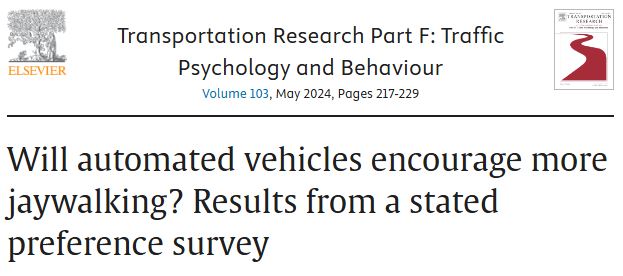Xiaoxia Dong, Erick Guerra, Ricardo A. Daziano
Abstract
When interacting with driverless cars, pedestrians might be emboldened to jaywalk knowing the vehicles will slow down for them automatically. Increased jaywalking might disrupt traffic flow and pose challenges for traffic law enforcement. Few studies examined pedestrians’ attitudes toward driverless cars’ safety implication, management strategies for the interactions between pedestrians and driverless cars, and how pedestrians would expect their street crossing behavior to change in the presence of driverless cars. We conducted an online stated preference survey of 1,000 residents in the Philadelphia and the Seattle metropolitan areas to investigate respondents’ attitudes toward driverless cars and their preferences of jaywalking under different driverless car saturation levels. Through descriptive data analysis and multilevel binomial logit analysis, we found that overall pedestrians felt less safe with driverless cars on the road. Pedestrians preferred limiting the speeds of driverless cars or disabling driverless functions in areas with heavy pedestrian traffic to increasing enforcement for jaywalking laws. Multilevel binomial logit analysis showed pedestrians were more likely to jaywalk in the presence of driverless cars in high visibility and low traffic volume, and were deterred by bigger, faster streets. Respondents’ current crossing behavior might serve as an indicator of their crossing behavior in the presence of driverless cars. Our findings remind cities that sound street design strategies could help to ensure safer interactions between pedestrians and driverless cars and greater acceptance of driverless cars on urban streets.
